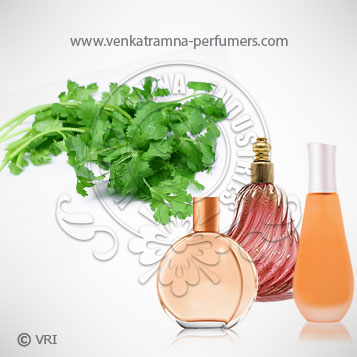
| Botanical Name | Corriandrum sativum |
| Common Name | Chinese parsley |
| Country of Origin | India |
| Solubility | Soluble in alcohol, insoluble in water |
| Specific Gravity | 1.000 - 1.040 @ 20°C |
| Optical Rotation | (0°) - (-2°) |
| Refrective Index | 1.573 - 1.600 @ 20°C |
| PlantPart | Seeds |
| Bland With | This essential oil blends well particularly with bergamot, cinnamon, ginger, grapefruit, lemon, neroli and orange. |
| CAS No | N/A |
| Flash Point | > 149.00 °F |
| Extraction Method | Supercritical CO2 Extraction |
Coriander oil is obtained from Coriandrum sativum of the Umbelliferae family. Also known as coriander seed and Chinese parsley, the oil is extracted from the crushed ripe seeds by CO2 extraction method.
There are records that state that Egyptians used coriander for medicine as far back as 4000 B.C. Coriander was part of the Hanging Garden of Babylon and is mentioned several times in the Old Testament of the Bible. At one time or another it has been grown commercially in India, the Middle East, eastern Europe and Central and South America. In the United States it is cultivated commercially in Kentucky, where it is used by distillers
Color : colorless to pale yellow clear liquid with medium odor strength,
Aroma : Sweet, spicy, slightly fruity, herbaceous warm smell
Its main chemical components are borneol, linalool, cineole, cymene, terpineol, dipentene, phellandrene, pinene and terpinolene.
Coriander oil can be useful to refresh and uplift the mind and can help for mental fatigue, tension, migraine and nervous weakness. It is also helpful for alleviating rheumatism and arthritis pain, as well as muscle spasms.